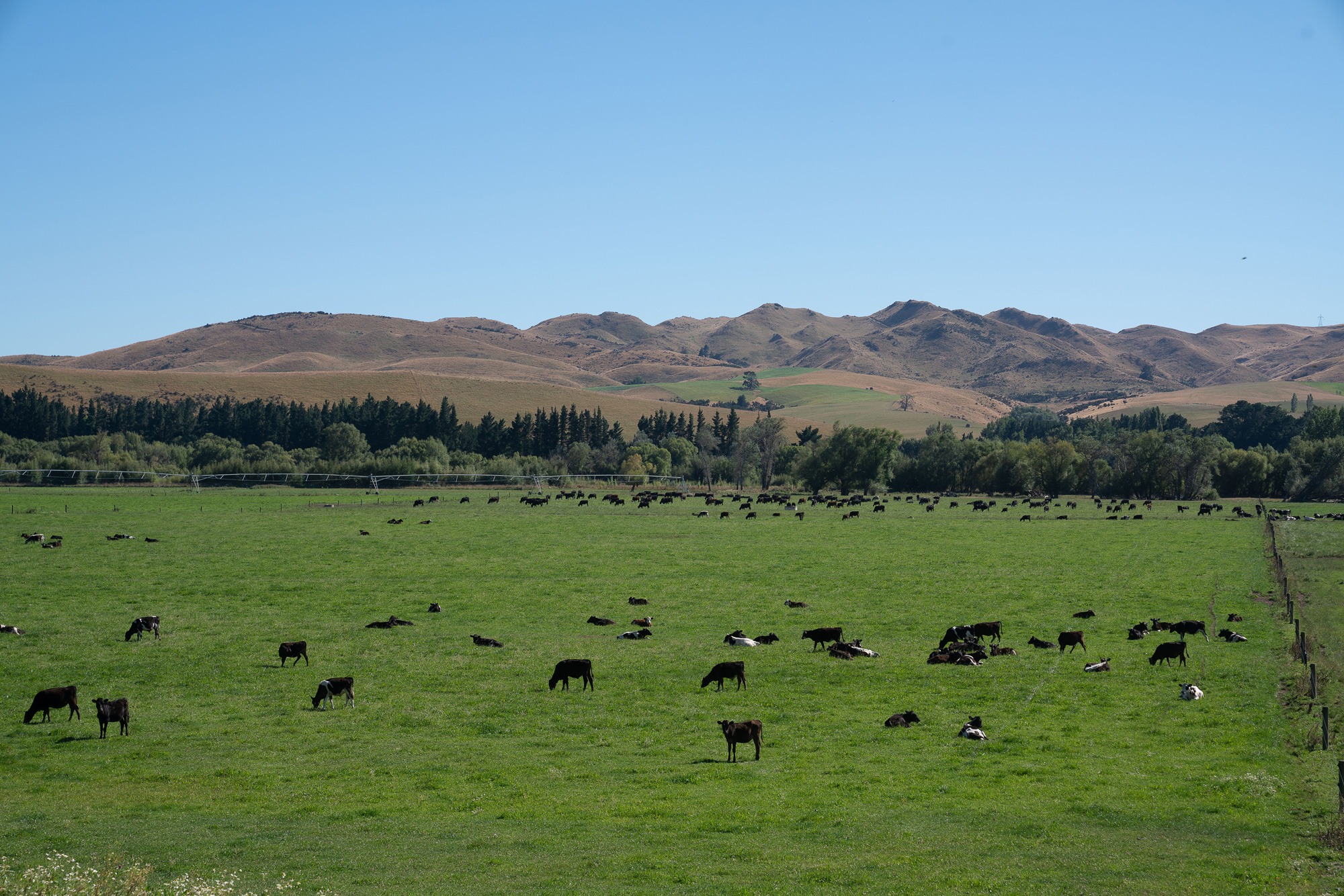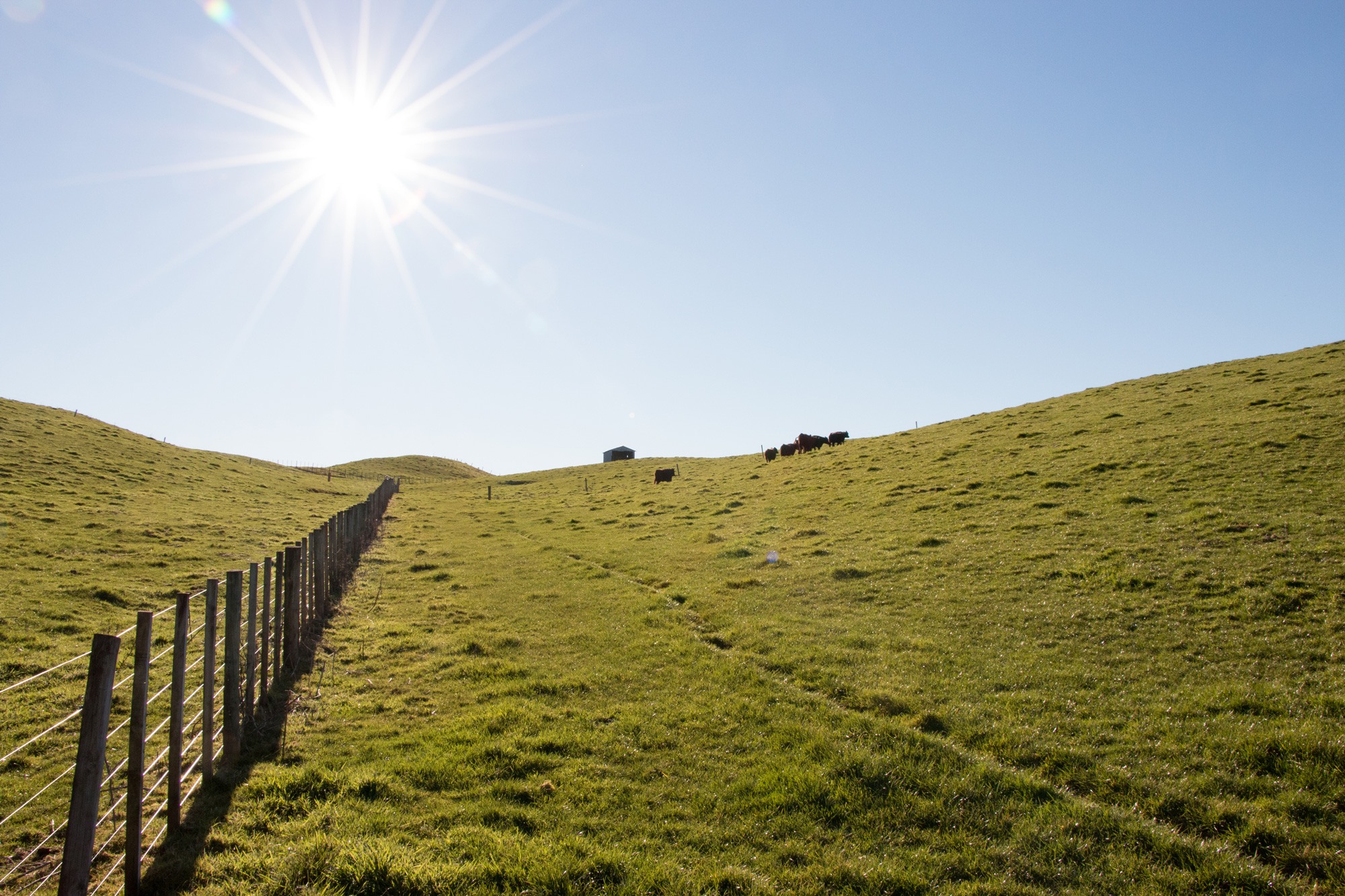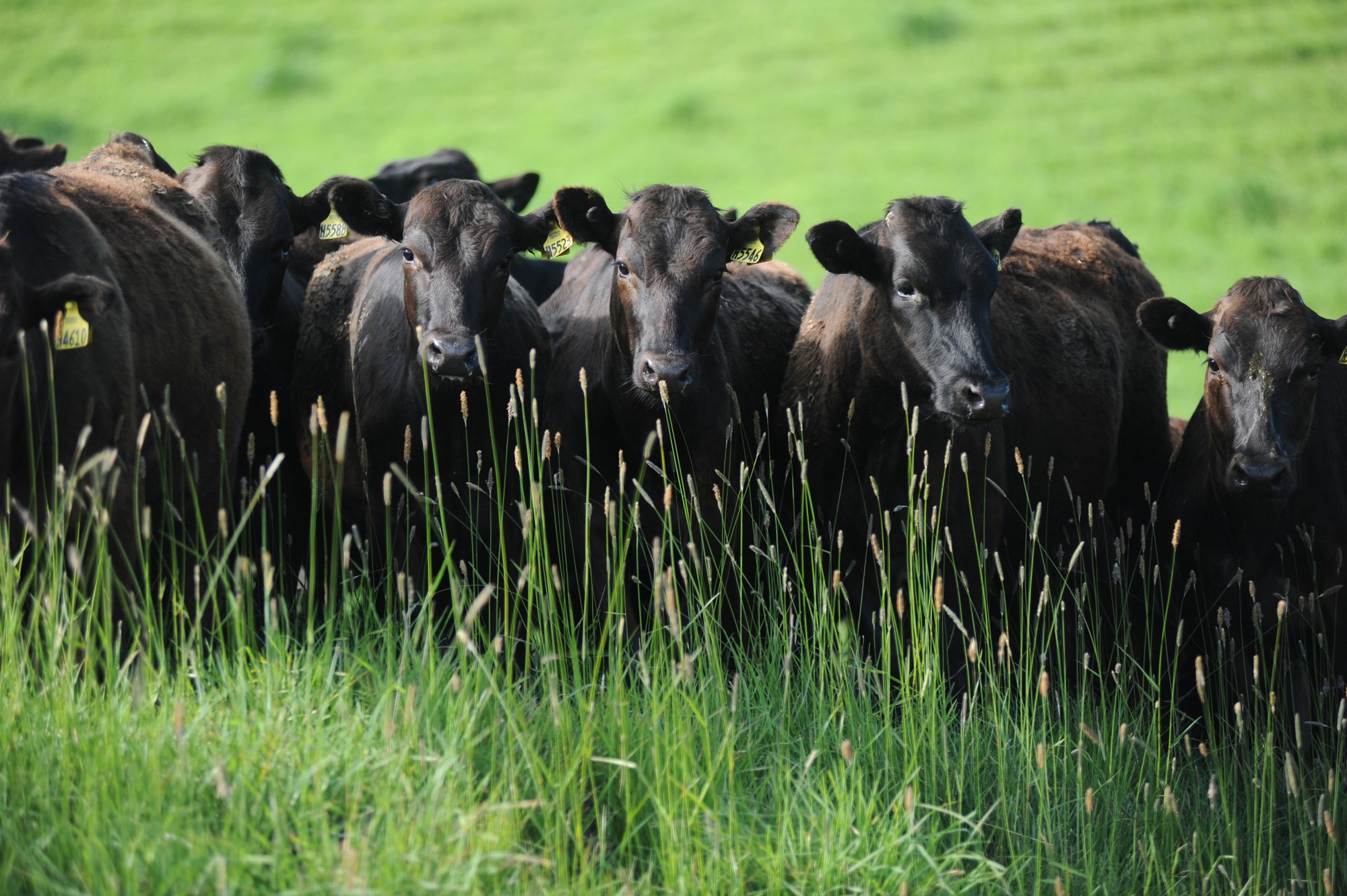We have witnessed an explosion of the use of the term “grass-fed” to describe beef over the last decade. As with everything in life, not all beef are created equal.
How are Beef ‘conventionally’ raised?
Conventional beef production has three stages. The first is called “cow-calf.” Producers maintain herds of mature cows, mate them every 12 months and raise the calves to weaning age (about 6 months). Stage two is called “stocker” or “backgrounding.” The weaned calves are raised mainly on pasture, along with wheat or oats, for another 6 to 12 months. The beef can gain three pounds a day, reaching 750 pounds before the third stage. This is the “feedlot” stage, where beef are generally kept in confinement and fed mainly corn and grain until they reach the market weight of around 1,400 pounds.
It is an unfortunate reality that in addition to corn and grain (which on their own are not good feed for the beef, as we will discuss), industry byproducts are mixed into the feed to reduce the cost of production. It is well documented that other ingredients fed to beef include chicken feathers, stale bread, candy, and salvaged pet food. A study published in the Journal of Animal Science concluded that stale chewing gum, still in its aluminum wrappers, “can safely replace at least 30 percent of growing or finishing diets without impairing feedlot performance or carcass quality.”
It is also an unfortunate reality that beef are moved from one location to another between each stage, sometimes far distances. And one final unfortunate reality of our conventional agricultural system is that about 2 percent of feedlots in North America account for over 80 percent of total beef production. These feedlots, also known as Concentrated Animal Feeding Operations or “CAFO”’s, pollute air, ground water and surface water and are an environmental disaster.
What is ‘Grass-fed’?
There is no universally accepted definition for the term “grass-fed beef.” Technically, you can walk into any butcher shop, ask for grass-fed beef, and be told, truthfully, that “all of our beef is grass-fed.” This is because grass is without a doubt a component of the feed during a beef’s lifetime. Is not telling the whole truth the same as lying?
For clarity, we like to separate from the majority by using the term “100% grass-fed beef” to signal that our beef have only consumed grasses, and never a diet of corn and grains (or bubble gum).
Why is Grass-fed beef healthier?
Cattle, along with bison, sheep, goat, deer and other grazing animals are ruminant animals. Their digestive system is very different from our own. Instead of having one stomach, they have four; well to be accurate, they have one stomach with four compartments. A ruminant animal can break down grass and other coarse vegetation that animals with one stomach cannot digest. Many of the plants that grow on earth cannot be used directly by humans as food. But ruminants have the ability to convert these plants and residues into high-quality protein, in the form of meat.
It is not just that ruminants can digest grasses, it’s more like they need to be digesting grasses to stay healthy. When cattle are fed a starchy diet made up of low-fibre grain and corn, a number of problems arise. One of the most common problems is called acidosis, which stems from lower pH in the digestive system. Other common problems associated with feedlots are liver abscesses, bloat, feedlot polio and dust pneumonia. The stress put on the cattle from its diet are significant and inhumane. The conventional solution is to give cattle chemical additives along with a constant, low-level dose of antibiotics to prevent reactions from becoming fatal. The addition of antibiotics sub-therapeutically leads to other problems, such as antibiotic resistance in humans.
Further down the line, the nutritional value of beef finished on corn and grains is reduced substantially. One common metric used is the ratio of Omega 6 to Omega 3. Humans evolved eating a diet with an Omega 6:3 ratio of 1:1, but today we eat a diet closer to 20:1. Conventional beef generally has an Omega 6:3 ratio around 24, whereas First Light’s beef has a healthy Omega 6:3 ratio of 1.3. The increase in Omega 6 in our diets has been linked to many diseases, including cancer, cardiovascular diseases, obesity, depression, and other inflammatory and autoimmune diseases. Beyond the Omega 6:3 ratio, 100% grass fed beef is richer in antioxidants, beta-carotene, vitamin B, C & E vitamins.
Then, of course, there’s the environmental impact.
First Light Farms
The truth is, we have an unfair advantage. We are blessed with the perfect climate, ideal landscape, and healthy soil to produce luscious pastures. All of us First Light farmers realize we are guardians of our land, and it is our job to keep the soil healthy.
A recent Netflix documentary called Kiss the Ground, revealed that the key to dropping down atmospheric carbon is healthy soil, and grass fed beef can play a pivotal role. Regenerative agriculture is nothing new. Visionaries like Allan Savory and Joel Salatin have been professing the importance of grass-based farming for decades.
It is incredible what can be done when we embrace nature, rather than try to control it.



